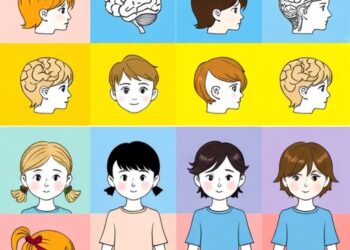In pausing to think before making an important decision, we may imagine the potential outcomes of different choices we could make. While this “mental simulation” is central to how we plan and make decisions in everyday life, how the brain works to accomplish this is not well understood.
In pausing to think before making an important decision, we may imagine the potential outcomes of different choices we could make. While this “mental simulation” is central to how we plan and make decisions in everyday life, how the brain works to accomplish this is not well understood.
An international team of scientists has now uncovered neural mechanisms used in planning. Its results, published in the journal Nature Neuroscience, suggest that an interplay between the brain’s prefrontal cortex and hippocampus allows us to imagine future outcomes in order to guide our decisions.
“The prefrontal cortex acts as a ‘simulator,’ mentally testing out possible actions using a cognitive map stored in the hippocampus,” explains Marcelo Mattar, an assistant professor in New York University’s Department of Psychology and one of the paper’s authors. “This research sheds light on the neural and cognitive mechanisms of planning—a core component of both human and animal intelligence. A deeper understanding of these brain mechanisms could ultimately improve the treatment of disorders affecting decision-making abilities.”
The roles of both the prefrontal cortex—used in planning and decision-making—and hippocampus—used in memory formation and storage—have long been established. However, their specific duties in deliberative decision-making, which are the types of decisions that require us to think before acting, are less clear.
To illuminate the neural mechanisms of planning, Mattar and his colleagues—Kristopher Jensen, a computational neuroscientist at University College London, and Guillaume Hennequin, a professor of computational neuroscience at the University of Cambridge—developed a computational model to predict brain activity during planning. They then analyzed data from both humans and laboratory rats* to confirm the validity of the model—a recurrent neural network (RNN), which learns patterns based on incoming information.
The model took into account existing knowledge of planning and added new layers of complexity, including “imagined actions,” thereby capturing how decision-making involves weighing the impact of potential choices—similar to how a chess player envisions sequences of moves before committing to one. These mental simulations of potential futures, modeled as interactions between the prefrontal cortex and hippocampus, enable us to rapidly adapt to new environments, such as taking a detour after finding that a road is blocked.
The scientists validated this computational model using both behavioral and neural data. To assess the model’s ability to predict behavior, the scientists conducted a novel experiment measuring how humans navigated an online maze on a computer screen and how long they had to think before each step. To validate the model’s predictions about the role of the hippocampus in planning, they analyzed neural recordings from rodents navigating a physical maze configured in the same way as in the human experiment. By giving a similar task to humans and rats, the researchers could draw parallels between the behavioral and neural data—a particularly innovative aspect of this research.
The experimental results were consistent with the computational model, showing an intricate interaction between the prefrontal cortex and hippocampus. In the human experiments, participants’ brain activity reflected more time thinking before acting in navigating the maze. In the experiments with laboratory rats, the animals’ neural responses in moving through the maze resembled the model’s simulations.
“Overall, this work provides foundational knowledge on how these brain circuits enable us to think before we act in order to make better decisions,” observes Mattar. “In addition, a method in which both human and animal experimental participants and RNNs were all trained to perform the same task offers an innovative and foundational way to gain insights into behaviors.”
*University of California, Berkeley neurophysiology researchers John Widolski and David Foster provided the neural data taken from experiments with laboratory rats used in the paper’s analysis.
DOI: 10.1038/s41593-024-01675-7
# # #
Journal
Nature Neuroscience
Method of Research
Experimental study
Subject of Research
People
Article Title
A recurrent network model of planning explains hippocampal replay and human behavior
Article Publication Date
7-Jun-2024




